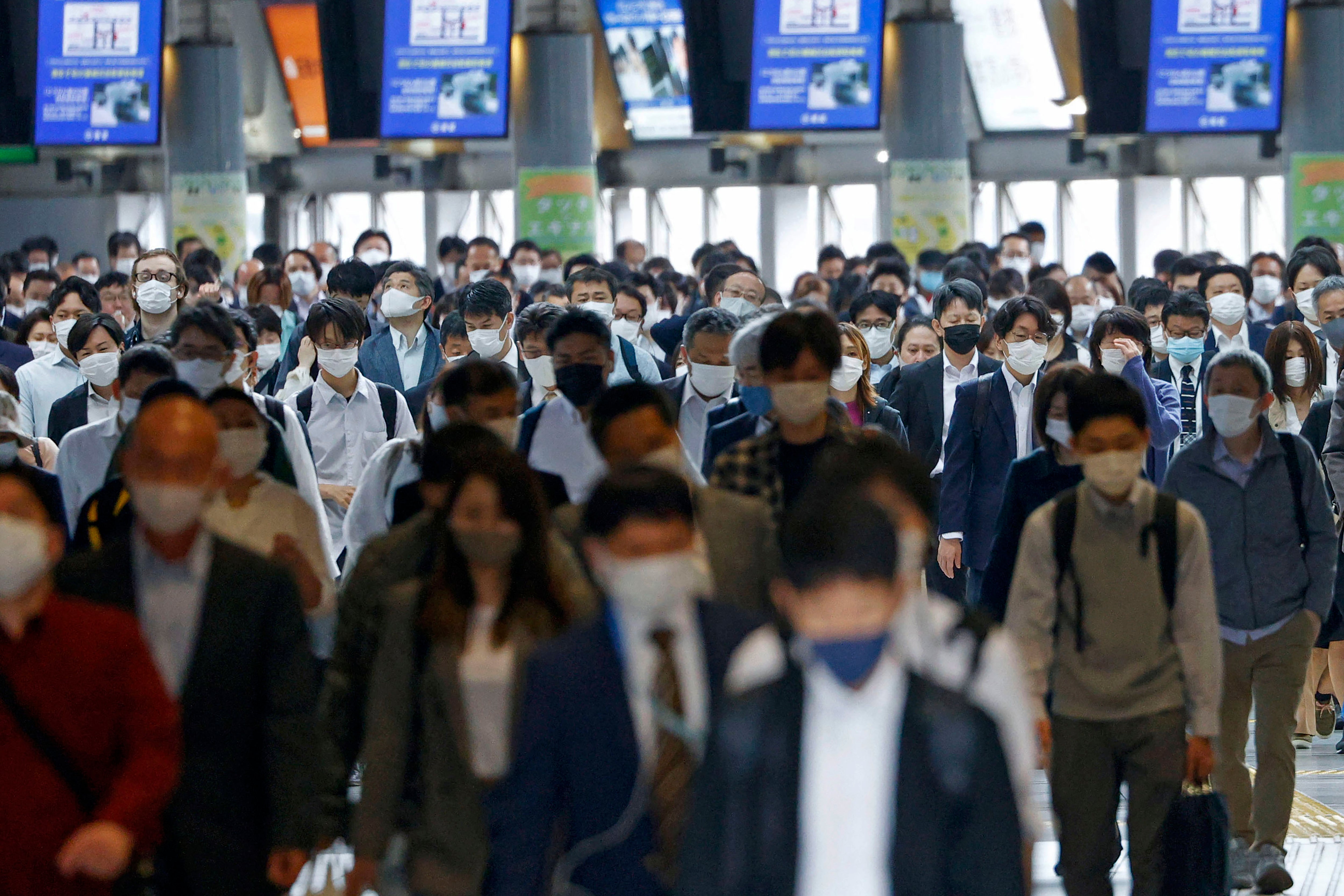Japan set to extend virus emergency in Tokyo through May 31
Japan is set to expand and extend a state of emergency in Tokyo and other areas through May 31 as the coronavirus continues spreading and uncertainty grows about safely holding the Olympics just 11 weeks away

Your support helps us to tell the story
From reproductive rights to climate change to Big Tech, The Independent is on the ground when the story is developing. Whether it's investigating the financials of Elon Musk's pro-Trump PAC or producing our latest documentary, 'The A Word', which shines a light on the American women fighting for reproductive rights, we know how important it is to parse out the facts from the messaging.
At such a critical moment in US history, we need reporters on the ground. Your donation allows us to keep sending journalists to speak to both sides of the story.
The Independent is trusted by Americans across the entire political spectrum. And unlike many other quality news outlets, we choose not to lock Americans out of our reporting and analysis with paywalls. We believe quality journalism should be available to everyone, paid for by those who can afford it.
Your support makes all the difference.Japan is set to expand and extend a state of emergency in Tokyo and other areas through May 31 as the coronavirus continues spreading and uncertainty grows about safely holding the Olympics just 11 weeks away.
The current emergency in Tokyo and Osaka, Kyoto and Hyogo prefectures in the west is scheduled to end Tuesday. Instead, officials are seeking an extension in those areas and to expand the virus-control measure to Aichi in central Japan and Fukuoka in the south.
Officials in charge of Japan's COVID-19 response are seeking experts' endorsement of the plan, and Prime Minister Yoshihide Suga will announce the measures later Friday.
Tokyo logged 591 new cases of coronavirus infection Thursday, a slight dip from when the state of emergency began in the capital last month, but far above a target of 100 that some experts recommend.
The extension deepens uncertainty over a speculated May 17 visit by International Olympics Committee President Thomas Bach and if Japan, one of the world's least vaccinated nations, can safely host the Summer Olympics postponed from last year and scheduled to be held July 23-Aug. 8.
Despite criticism for being slow to take virus measures, Suga has been reluctant to hurt the already pandemic-damaged economy and pledged to keep the state of emergency “short and intensive," though experts said just over two weeks would be too short to effectively slow the infections.
The ongoing emergency is Japan’s third and came only a month after an earlier measure ended in the Tokyo area.
Less stringent, quasi-emergency will be expanded to eight prefectures from the current six where bars and restaurants are required to close early.
Japan has about 616,000 cases including about 10,500 deaths since the pandemic began. The country has managed so far without any enforced lockdowns, but people are becoming impatient and less cooperative to virus measures, making them less effective.
Medical systems in hardest-hit Osaka have been under severe pressure from a COVID-19 outbreak there that is hampering ordinary health care, experts say. A number of patients died at home recently after their conditions worsened while waiting for vacancy at hospitals.
Past emergency measures, issued a year ago and then in January, were toothless and authorized only non-mandatory requests. The government in February toughened a law on anti-virus measures to allow authorities to issue binding orders for nonessential businesses to shorten their hours or close, in exchange for compensation for those who comply and penalties for violators.
Shutdown requirements for bars, karaoke and most entertainment facilities will stay in place until the end of May, but department stores will be allowed to operate for shorter hours.
Wearing masks, staying home and other measures for the general public remain non-mandatory request.
The government has also been criticized over its snail-paced vaccination rollout, which has covered only 2% of the population since inoculations began in mid-February.